by Alessandra Ressa
The bottom of the Lufloch cave at a depth of over -300 has been finally reached by Trieste speleologists. An expert team of the Adriatic Society of Speleology have finally made it to the dark waters below, thus discovering a new stretch of the mysterious underground river Timavo unknown until now.
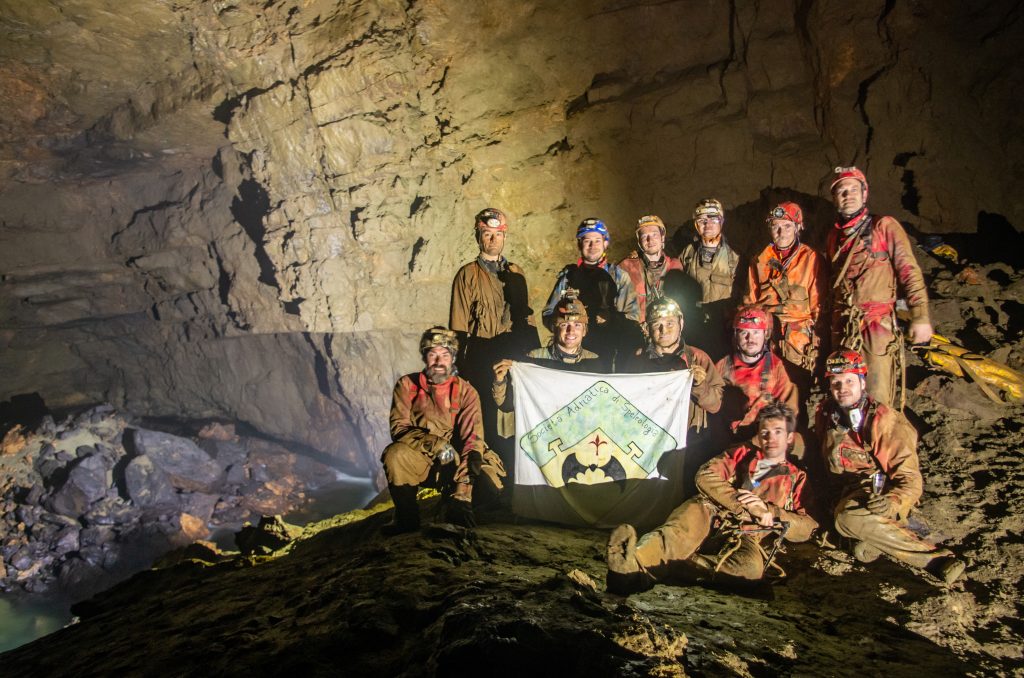
After 23 years of explorations and excavations in the cave called Luftloch – breathing hole in German – whose access opens onto the bottom of a sinkhole in Trebiciano, in the Trieste Karst, a team of 13 speleologists led by SAS president Marco Restaino, managed to reach the bottom of the new cave where the river flows at a depth of approximately -310 meters. It took over 10 hours for the mission to be completed. The unprecedented result marks another, very important step in the mapping of the mysterious river and its underground caverns.
The news was given today by Marco Restaino, who has worked very hard in the past two decades to find the vertical passage to the river. “It’s a dream come true” he said as soon as he removed his muddy helmet after a full day underground. “The discovery – Restaino added – confirms Trieste as the historical cradle and active center of international speleology”.
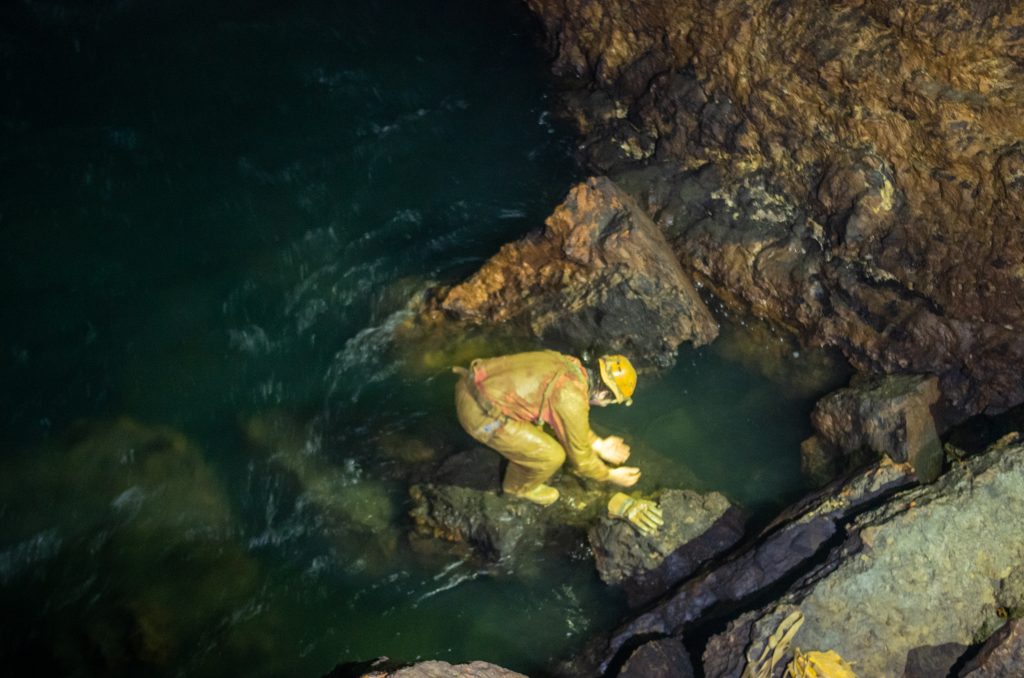
It took a long time to secure the ropes for the final 50 meters of the descent. The instability of the walls and rocks above the river and the narrow passages preceding the large cavern, together with the amount of water and mud everywhere, did not facilitate the task. The speleologists were cold and soaked wet throughout the exploration. Once the bottom was reached, the team carried out a preliminary survey of the cavity, took measurements and collected samples of water and sediment to be taken to the lab and analyzed. Olms were resting motionlessly all around, a clear sign of unpolluted waters. Unlike their peers at the Trebiciano abyss, this was probably their first exposure to artificial light.
The excavations started in 2000 by a young Marco Restaino and Piero Slama. Later, the work team was joined by other fearless cavers, including Fulvio Levi and Maximilian Blocher. The initial part of the cave was excavated artificially to a depth of 60 meters, harnessing and consolidating looming underground landslides. After securing the landslides, solid rock, and more specifically a cave, was finally reached. Within this cave, by widening numerous impassable passages, it was possible to descend into a series of wells which led, in 2010, to a depth of almost 250 meters below the surface.
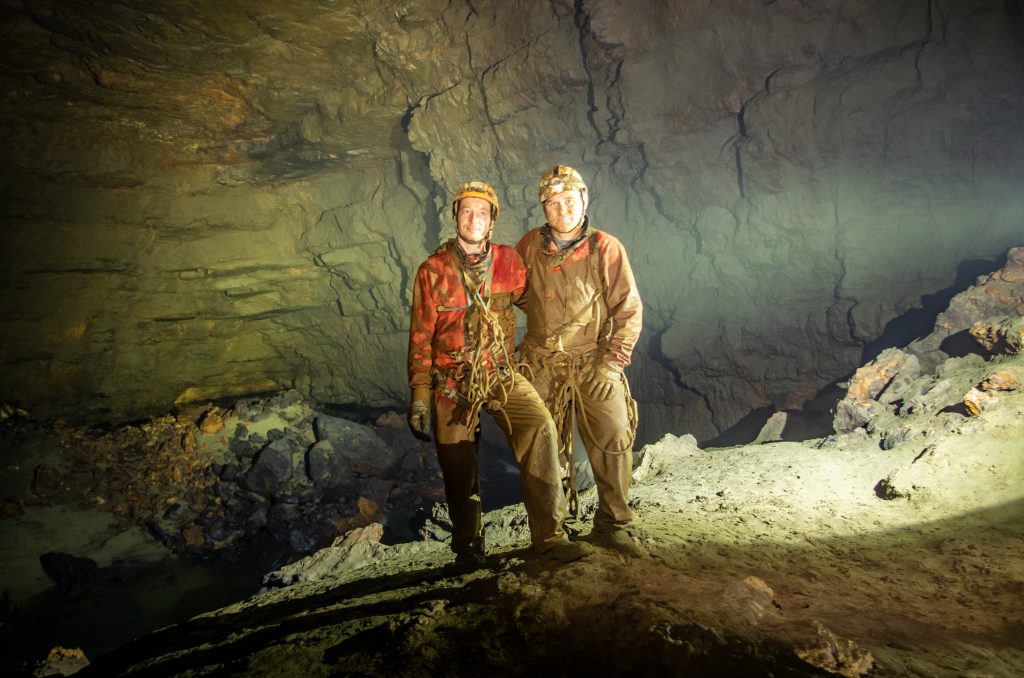
At this point, the Timavo river seemed nearer and nearer, but two obstacles weighed heavily on the progress of the work, risking to compromise further exploration. The first problem was the lack of oxygen. For reasons that have not yet been identified, at a certain depth in the cave the percentage of oxygen in the air drops to very low levels. This obstacle was solved by bringing a tube from the surface down to -250 meters, into which the air was forced inside by a large fan powered by a generator. The oxygen was thus brought to a safe level when working inside.
If the biggest difficulty seemed to be solved, a further problem faced the explorers. The way forward was in fact reduced to a one-centimeter wide slit, so narrow that it was impossible to put a hand inside. The speleologists had hoped that this would have been a short passage and that it would have taken little time to widen it. But it turned out to be very long, almost 40 meters long. This would have made anybody else give up, except stubborn Restaino. It took years to enlarge it to a passage big enough to squeeze a human in.
On March 23 2024 the last obstructing rock layer was removed and it was thus possible to access a large cave, at the bottom of which ran a stretch of the Timavo river. This large underground cavern is of considerable size with its maximum height of almost 50 meters, 100 meters in length, and at least 30 meters wide.
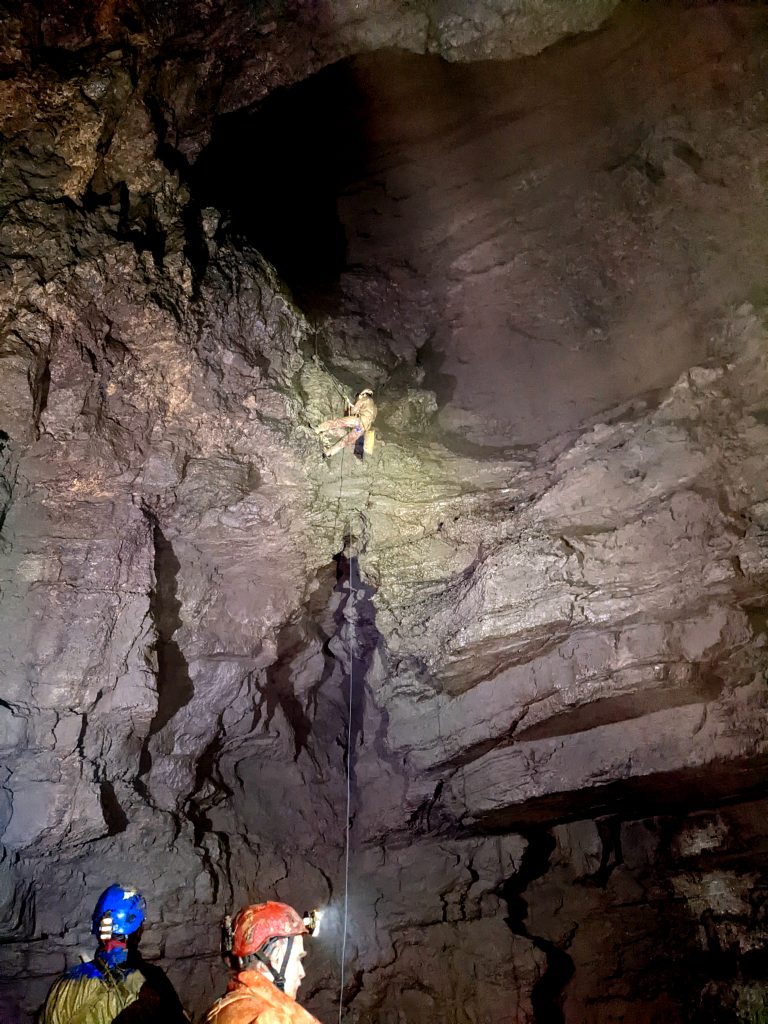
The Luftloch thus becomes part of the very few caves in the Karst that exceed 300 meters in depth. But the exploration is not over. In the months to come the team will take further measurements and attempt to access a tunnel which engulfs the river on one side. The river divides the cave into two parts, so at this exploratory stage it was not possible for the speleologists who reached the bottom to go over the waters to the other side as there appeared to be a considerable flow and strong currents.
The biggest surprise to further investigation, however, may come from the side where the river leaves the cave. The water, rather than disappearing into a siphon, flows into a very long tunnel. With a laser measuring device, the tunnel appears to be at least 50 meters long. Beyond this measurement, the device no longer allows reading.A sturdy rubber dinghy will be brought down the 300 meters during the next exploration, in order to access the tunnel and add more precise data to the ones collected so far.
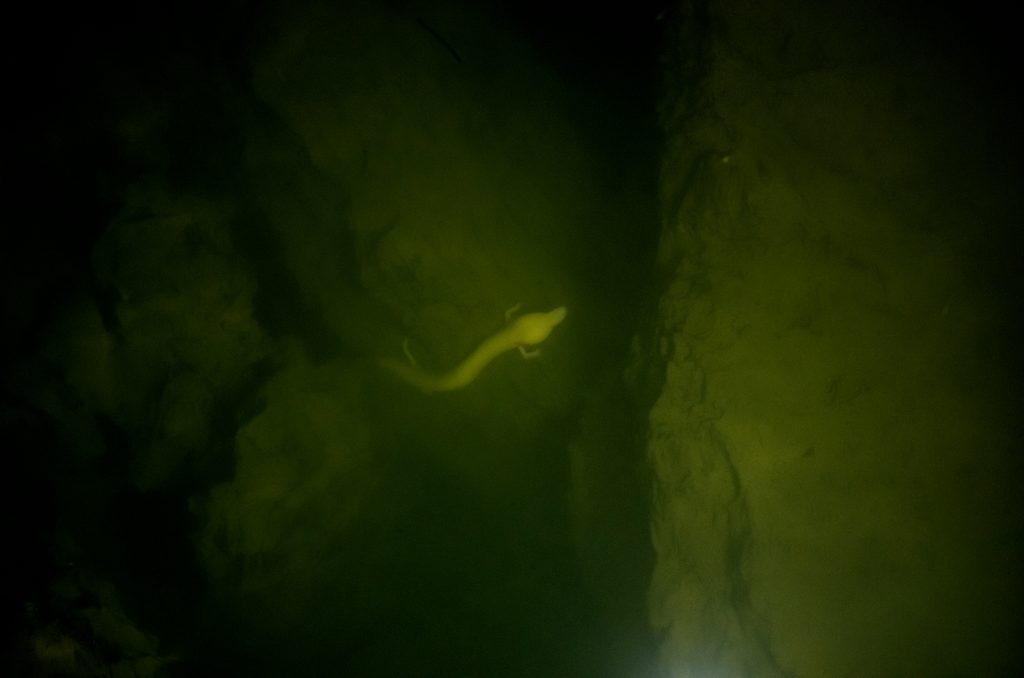
Undoubtedly, the new cave holds many more surprises. This discovery opens new possibilities not only for speleologists, but also for cave divers who have been engaged for years in the Timavo explorations.




























